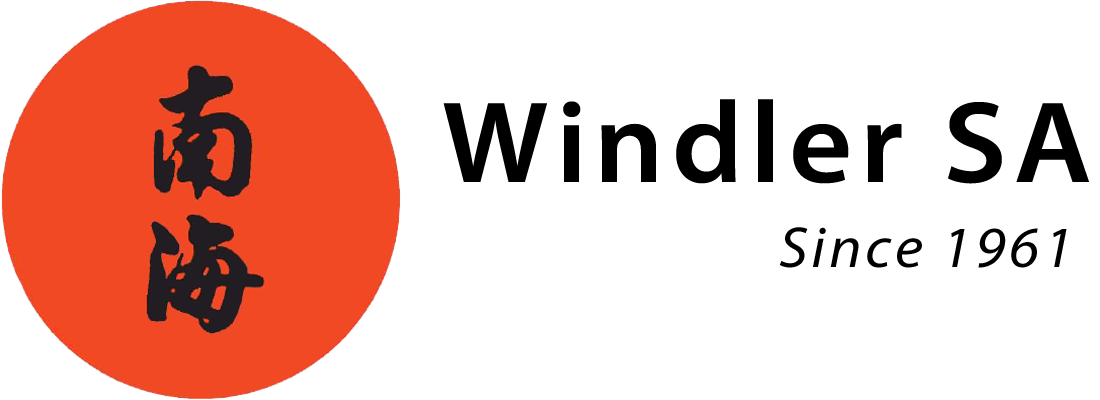Cultured Pearls
The company Windler SA has now been specialised in cultured pearls for more than 55 years already. We have been working for decades with the same pearl farms around the world to guarantee our customers the quality and traceability of our products. Share our passion for these sea jewels and discover their origins and characteristics below.
Akoya
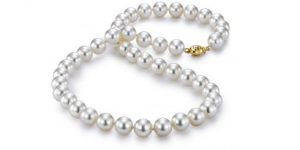
Akoya pearls are considered to be the “traditional” salt-water pearls, known for their unmatchable lustre. Many people are misled to believe Kokichi Mikimoto “invented” the cultured pearl. However, this misconception is has some truth as he did play an important role. It was the British biologist William Saville-Kent who first developed the technique to breed Pinctada oysters in Australia in the 1800’s. Today, the Akoya pearl is mainly cultured in Japan in the Pinctada Fucata oyster and usually has a diameter between 2 and 10 mm. This pearl is characterised by its roundness and white, cream and pinkish colours. Sometimes beautiful silver, grey and blueish colours can also be observed.
South Sea
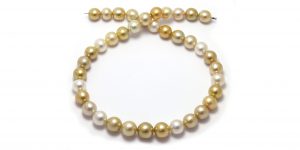
The South Sea pearl (SSP) is considered to be the “queen” of all salt-water pearls. Initially cultured in Australia in the Pinctada Maxima oyster, today pearl farms also produce SSP in Indonesia and in the Philippines. Thanks to the clean oceans filled with abundant plankton which these oysters feed on, these pearls can reach sizes between 8 and 17 mm, and exceptionally up to 20 mm. The thickness of MOP of this nucleated pearl usually lies between 2 and 6 mm. SSP are therefore characterised by their large sizes and colours that span from white to silver, including the famous champagne and golden colours.
Tahiti
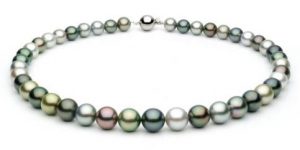
The Tahiti pearl is today extremely widespread and appreciated for its panel of exotic colours. This salt-water pearl is cultivated in the Pinctada Margaritifera oyster in pearl farms all across French-Polynesia. Similar to SSP pearls, Tahiti pearls can reach sizes between 8 and 16 mm, and exceptionally up to 20 mm. This pearl is characterised by the huge variety of colours going from black to grey, silver, green, brown, peacock, aubergine, etc… There are very very few farmers that produce 7 mm Tahiti pearls, but we still manage to supply them to our customers.
Freshwater
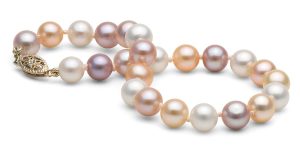
Initially cultivated in Japan in the Biwa Lake, freshwater pearls (FWP) are mainly produced in China in lakes and paddy fields in the Hyriopsis cumingii oyster. Unlike salt-water oysters, up to 40 pearls can be produced in one go with freshwater oysters. This makes FWP the most afforfadable pearls on the market today. Usually non-nucleated, they are known for their baroque and irregular Keshi shapes, and only a very small part of the production is round. FWP are characterised by their colours that span from white to pink, orange, and sometimes even dark purple. “Metallic” colours can also be observed.
Assortment
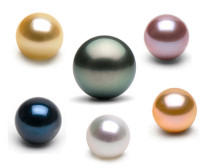
Our cultured pearls are available under various forms, ready for your daily requirements: per piece (loose pearl), per pair, triplets, bracelets (18-20 cm), strands (41-43 cm) and also long sautoirs (60-180 cm). Our large assortment provides our customers with a huge choice when it comes to our service and after-sales service for extending necklaces, re-matching pairs, etc…
To obtain prices of our pearls per piece, please use our contact page or consult the Price List booklet of our Findings Catalogue.
